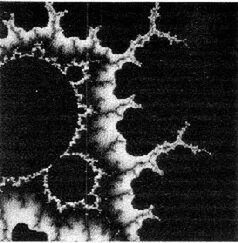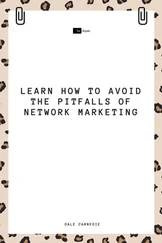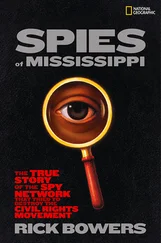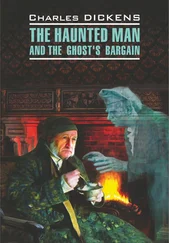“She’s searching the building next door, we didn’t know which one you were in.”
“Shit. Okay. Did you notice if anyone was following you?”
“No! Who would be following me?” Taer said.
“Can we go get Gina?”
“Why? Who was following me?”
“The people who took my gun.” a
Taer checked her phone, but didn’t have service in the basement, so she couldn’t call Nix. She scurried back up the stairs with Berliner, back through the long hallway with the Edge of the World maps and screen prints, through the steel door, up the building’s main staircase to the second floor, down the elevator to the lobby, and back out into the cold. Taer tried to zip her coat at the same time as she jogged between the two buildings, and Berliner shouted at her to hurry.
The door to the second building was again locked. Taer pulled out her cell phone, and called Nix, who answered with a hint of annoyance in her greeting.
“Stop bitching at me and listen,” Taer said. “Come out of the building. I’m outside. I’m with Nick.”
Nix appeared a few minutes later and Berliner greeted her.
“You motherfucker,” Nix said. “You broke into our apartment.”
“My apartment,” Taer said.
Berliner said, “I swear to god, that wasn’t me.”
“Who the fuck else is there?” Nix asked.
Berliner ushered them back to the other building, to tell them about their real enemy, a pair of young women named Ali and Peaches — who were watching them from the coffee shop across the street.
* Details from this Saturday were pulled from Cyrus’s interviews with Nix, and a close examination of Taer’s belongings — none of her socks or gloves were in matching pairs. — CD
† While Taer’s behavior exemplifies some of the symptoms of Seasonal Affective Disorder, she was never formally diagnosed.
‡ I retained Cyrus’s digression into the Edge of the World maps here, hoping it ramps up rather than cuts tension. — CD
§ Ziphius was probably invented by the naturalist and cartographer Conrad Gesner (sometimes spelled Konrad Gessner). Steipereidur was invented by the scientist and artist Abraham Ortelius.
ǁ Ancient Maps and Drawings, Volume 3: The Age of Exploration , ed. Gerard Gumpert (New York: Macmillan, 1972), 269.
a It is telling that Berliner and Taer’s first exchange reads like a conversation between people who already know each other. Each had occupied a space in the other’s brain for weeks before they actually met. They very quickly developed a shorthand.
“Right now I’m a songwriter, and what I do is I perform, and write verses and choruses. But I might not always do that,” Molly said. “I might cross over, not like into another genre, but into another aspect of culture entirely. I don’t like boundaries. Everybody is a complicated character. It’s like that poem from — what’s his bucket? — Walt Whitman. ‘Song of Myself.’ Like, ‘I am large, I contain multitudes.’ ”
–“LIVING IN MOLLY’S METROPOLIS,” The New York Times Magazine

On June 18, 2002, just after 4 a.m., every member of the New Situationists received an emergency text message. The group often used text messaging for mass or personal communications. They all had burner cell phones, the same type that drug dealers used, which didn’t require that they disclose any personal information when signing up for service. Twice a month, they destroyed their old phones and bought new ones. Every member of the group used a generic nickname, like Jane or Joe or Nick, as their “phone name,” and they developed a series of simple code words to cloak the meanings of their messages. A text that began with “911,” for example, was personal or low priority. The message on June 18 began with the word “hey” which meant there was some kind of emergency that required immediate attention. The rest of the June 18 text was written in a biliteral cipher: a code where each letter of the intended message was replaced by a group of five A’s and B’s; for example, ‘m’ could be represented by ABAAA and ‘o’ could be represented by BBBAA, so ‘Mom’ would be spelled ‘ABAAA-BBBAA-ABAAA.’ David Wilson had adopted the simple code as a way for the New Situationists to communicate covertly but easily.
Although the group had scattered after planting their bombs, they were all awake when the message came in and they quickly decoded it: “M-H was arrested. Come to the headquarters now.” Before Kraus’s arrest report had even been filed, the New Situationists had sheltered themselves in their headquarters, the secret basement level of an office building at 2356 North Racine Avenue, at the corner of Armitage.*
The New Situationist headquarters was modeled on a building designed by Constant, but never built. Constant called the building La Maison Astuce or The Trick House. When he was young, Constant hoped to build La Maison Astuce as a personal residence to retire to, but by the time he reached the end of his life he was more concerned with painting than building. In 1992, he published the blueprints for anyone to use.
La Maison Astuce has seventeen rooms that branch off one central hallway. The first sixteen rooms, identical squares, are only accessible from the top floor. Inside each room is a little world onto itself, not unlike individual apartments in an apartment building, though with a markedly different ambiance. Each “room” has two levels, the top floor with a foyer, living room, public bathroom, and office. Connected by a staircase, the bottom floor has a bedroom, kitchenette, private library, and private office. These sixteen rooms are, as Constant put it, “like their own little worlds.” †
The seventeenth room, at the back of the house, is the trick that gives the Trick House its name. Although it is the same size as the other sixteen rooms, it’s not split into two levels. Instead, the ceilings are two stories high. The door at the end of the second floor hallway opens into empty air; from inside the seventeenth room, the door blends seamlessly into the high wall. Any visitor that doesn’t know the trick to the room could, according to Constant, “fall to their death.” ‡The seventeenth room is safely accessed from the second floor hallway’s obscured eighteenth door, which has no doorknob. To open the door, you must push “in the spot where the doorknob would be” §; the door then opens to a spiral staircase.
The New Situationists also added a “back door” to the office, which wasn’t on Constant’s original plan. This secondary or emergency exit led to the underground garage of the building next door, through an entrance labeled EMPLOYEES ONLY, though no employee of the second building had a key. Although Constant didn’t design the back door, he condoned its creation. In an explanation of the space published in Potlatch , a proto-Situationist publication, he wrote, “A hidden exit, or several, placed somewhere in the building could provide additional opportunities for spatial play. Design at will, according to the landscape.” ǁ
When the New Situationists built The Trick House, they imagined that members could occupy the sixteen apartments, but most New Situationists never got around to moving in. Before the bombings, only Kraus, David Wilson, and the president of the New Situationists lived in the headquarters. Everyone else rented separate apartments. Berliner visited the headquarters often, but he was never given a room of his own to use; instead, he stayed with Kraus. There they could be alone to talk pop philosophy and have sex. According to Kraus, she let him sleep naked in her bedroom while she attended strategy meetings “above his clearance level” in the president’s office.
Читать дальше













